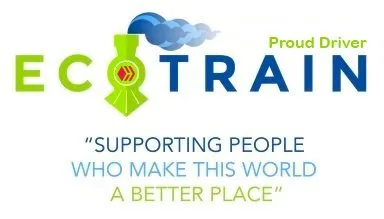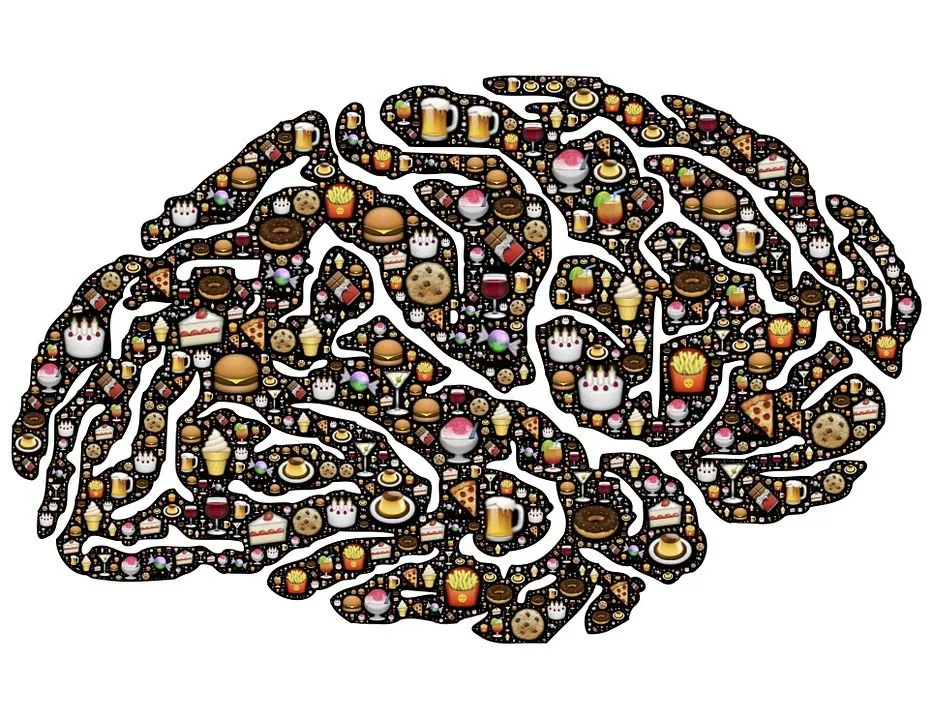
Addiction by JOEBU-ART in Pixabay
Traumatic bonding
When @ecotrain invites us to delve into ourselves to observe our habits and possible addictions, immediately the traumatic bonding jumped like a spring in my mind, as an addiction.
I reflected on it (a healthy habit that I cultivate) and discovered the relationship that might seem incongruous, but nevertheless, my head put it together like a puzzle and I ended up understanding and surrendering to the evidence that yes, by the traumatic bond I developed an increasingly common addiction to toxic relationships. Because of this and assuming that in these times it is a common evil, I will try not only to develop the theme proposed in the question of the week but also to bring light to an "addiction" obscured by the walls of the house where a seemingly normal couple sharing life.
Nowadays, people talk about toxicity in relationships as a normalized issue and normal is nothing more than the growing statistics of abusive dynamics that become habitual and addictive, not so much for sentimental reasons, but for psychological reasons and for an intricate network of neurological connections that modify the brain chemistry of those involved.
...those habits or addictions that are not good for us and yet we simply can't help but keep repeating those patterns day after day, even if we really don't want to. It may seem strange in a way, but that's the power of our mind and brain chemistry! Addictions are often based on chemical addiction, be it dopamine, adrenaline, nicotine, caffeine, etc., and when our brain gets used to having these chemicals around, it can be very challenging to give them up.
These words from @ecotrain fit perfectly with the thought I intend to thread regarding the knowledge I have about myself, my habits, and my addictions, in conjunction with what I have been researching for months now, as a result of the divorce I imposed on myself manage despite suffering from what I now understand squares with the notion of "traumatic bonding" and "Stockholm syndrome", the latter term has been bouncing around for some time now in my creative thinking and I have used it in my written productions: poems, short stories, and even essays, without yet knowing that I was suffering from it.
Stockholm Syndrome is associated with kidnapping situations, but for psychology, it covers a wider field. Stockholm Syndrome develops in those abusive relationships, in which one person allows another to be an oppressor who emotionally kidnaps the other...People who oppress, manipulate or abuse other people are able to establish such an intense emotional bond with their victim that the latter ends up loving and/or depending on them.
Psychological specialists assert that it is common to see in consultations, people who after maintaining an abusive and controlling relationship in which they have been manipulated, continue to love their abuser. Even when they are aware of the abuses they have endured, they are unable to break the bond that unites them and continue trying to justify and understand the manipulator with whom they live.
Precisely for this reason, I dedicated myself to investigating what happens to people who, like me, are unable to establish real emotional distance with the person who hurts us, experiencing positive feelings such as supporting, loving, or defending and, despite being separated, feeling a strong need to know about him, even imposing self-imposed limits. I thought it was unconditional love, but no, now I understand that it is an addiction to substances that our brain releases due to learned conditioning.
When I read the following exhibit, I was like, Oooohh:
Normally the abuser uses threat and power with subtlety, kindness, and even based on love, in order to be easily accepted by the victim. Gifts, compliments, an invitation to go out, show the victim that the abuser is not so bad. They are two sides of the same coin. The demonstration of love, consideration, and kindness, is a way to counteract the negative effect of the threat so that it can be accepted. It is to restore hope that the relationship will improve, that everything can change, that it is not such a bad relationship after all. For example, not getting jealous in a situation that would normally invite a jealous argument, makes the victim feel that the abuser can change, can improve, is not so bad, is trying, and is doing his or her part. This attitude reinforces the bonding between the two partners, making them accomplices in a very particular and unhealthy love...
But... Why traumatic bonding?
If we go to the origin of these words related to the exposed topic, we find that the word bond comes from the Latin "vinculum" and designates the union, relationship, or tie of a person or thing with another and relational or chronic traumaimplies maintaining conflictive relationships or being subjected to abusive situations, such as maintaining an unbalanced relationship where one is abused, living a conflictive divorce; or receiving constant threats of abandonment in a relationship. In any case, we are talking about wounds, since the term trauma comes from the Greek τραῦμα traûma, which means wound, and, if it is emotional, we say that it is a wound of the soul.
Following the ideas of Laura Lopez (Health Psychologist. EMDR Therapist) "Whoever stays in a traumatic union suffers wounds coming from the same bond, and not from external events to the relationship. It is the toxic bond that makes you sick and generates a reinforcement that makes it difficult to get out of that union".
And, once again, the term Toxic appears, so closely related to poison, a harmful chemical substance, to a corroding disease.
The aforementioned therapist states that the theory of the traumatic bond was developed by Donald Dutton and Susan Painter (1981) based on the experience and studies carried out with women victims of abusive relationships, observing that in this type of union very powerful bonds were generated; also being able to verify that these bonds were developed from two specific and essential characteristics of the abusive relationship: imbalance of power and intermittency of the abuse.
Relationships where power asymmetry prevails, also known as Up/Down relationships, become unbalanced and can become more unequal over time. The same power dynamic generates addiction among individuals, according to social psychologists. The one in the dominant position becomes dependent on the victim as he or she develops an inflated sense of power. While the victim feels more powerless, the dominant feel more powerful.
In my case, I could say that the fight was fought without strong words, stones, or sticks, it was rather a power war and not because I wanted to dominate, but to make myself respected, to try to balance the tension resulting from living with a narcissist addicted to attention, drama, and chaos (now I know). I recognize that I am controlling, but not disrespectful, while the other was super controlling, disrespectful, mouthy, and prone to frustration at not being able to dominate the relationship to his complete liking, but he did an ant's work, mining my holes, softening my defenses, making me co-dependent on his victimization.
By love bombing, the narcissist succeeds in programming the victim to continually receive his affection and attention, then being able to withdraw them at will at other stages of the relationship, thus creating a void, a need, an addiction. The person lowers his defenses and becomes vulnerable to all the artillery of manipulations that will follow. The victim, hypnotized by this bombardment, opens the door, the predator penetrates her psyche, gets the key to her vulnerabilities, buttons that he prepares to push to hurt her just where it can hurt her the most. the person must know that the abuse has begun with love bombing, that the person who seduced her does not exist, is not real, is a character created to hook her, that there has never been love, nor will there ever be love. That all demonstrations of affection, from the first to the last, are a complete fraud, that the only interest of this person is the fuel he can extract from her, while he takes advantage of her resources and exploits her...The purgation must be complete. Just as the victim was conditioned and programmed, so must he undergo a process, not always easy, of deconditioning and deprogramming, so that all emotional ties are broken and he regains his freedom.
Sometimes, I think that the narcissist is me and the victim is him, but that is another sequel of traumabecause the bonding as an emotional and biological process makes two people become addicted to each other, creating a dysfunctional attachment that grows with time living together.
Now I understand that thanks to "love bombing", a bait is generated that the narcissist will use to deceive, creating in the victim the constant longing for a return to the first phase of the relationship, giving false expectations that someday he will return to be the prince charming of the beginning, even if it is all a deception.
The brain chemistry propitiated the "hook-up" to the narcissistic person and the abuse, according to experts, has the potential to change even the structure of the brain. The truth is that zero contact person does not cure, but it is a step away to be a serum against toxicity. There are studies that suggest that the damage caused by traumatic bonding can be reversed by increasing the serotonin levels in our brains... We will have to try it. But, in the meantime, I ask the Universe for strength to plant an iron zero contact(despite achieving the divorce, I have not had enough willpower to block him on whats app and cut that thread that hisses like a crouching snake sometimes, but that it have been coiling little by little, I read or hear his notes, but I no longer answer). I wish to bless it and let it go, from my heart, to free myself and release it, but but I still process the poison, I am still intoxicated, still fighting.
Vínculo traumático
Cuando @ecotrain nos invita a profundizar en nosotros mismos para observar nuestros hábitos y posibles adicciones, de inmediato saltó como un resorte en mi mente el vínculo traumatico, un tema que tiene secuestrada mi mente como una adicción.
Lo reflexioné (un hábito saludable que cultivo) y descubrí la relación que pudiera parecer incongruente, pero que sin embargo mi cabeza armó como un rompecabezas y yo terminé por entender y rendirme a la evidencia de que sí, que por vínculo traumático yo desarrollé una adicción cada vez más común en relaciones tóxicas. Por esto y asumiendo que en estos tiempos es un mal común, intentaré no sólo desarrollar el tema propuesto en la pregunta de la semana, sino también llevar luces a una "adicción" oscurecida por las paredes de la casa donde comparte la vida una pareja aparentemente normal.
Hoy en día, la gente habla de la toxicidad en relaciones de pareja como una cuestión normalizada y de normal no tiene más que la creciente estadística de dinámicas abusivas que se vuelven habituales y adictivas, no tanto por razones sentimentales, sino por motivos psicológicos y por una intrincada red de conexiones neurológicas que modifican la química del cerebro de los involucrados.
...esos hábitos o adicciones que no son buenos para nosotros y, sin embargo, simplemente no podemos evitar seguir repitiendo esos patrones día tras día, incluso si realmente no queremos hacerlo. Puede parecer extraño en cierto modo, ¡pero ese es el poder de nuestra mente y de la química de nuestro cerebro! Las adicciones suelen basarse en la adicción a sustancias químicas, ya sea la dopamina, la adrenalina, la nicotina, la cafeína, etc., y cuando nuestro cerebro se acostumbra a tener estas sustancias químicas a su alrededor, puede ser un gran reto abandonarlas.
Estas palabras de @ecotrain encajaron a la perfección con el pensamiento que pretendo enhebrar respecto al conocimiento que tengo sobre mí, mis hábitos y mis adicciones, en conjunción con lo que he ido investigando desde hace meses, a raíz del divorcio que me impuse gestionar a pesar de padecer lo que ahora entiendo cuadra con la noción de "vínculo traumático" y "síndrome de estocolmo", este último término ha estado rebotando desde hace tiempo en mi pensamiento creativo y lo he utilizado en mis producciones escritas: poemas, cuentos y hasta ensayos, sin aún saber que yo lo estaba padeciendo.
El Síndrome de Estocolmo está asociado a situaciones de secuestro, pero para la psicología abarca un campo más amplio. El Síndrome de Estocolmo se desarrolla en aquellas relaciones abusivas, en las que una persona le permite a otra un lugar de opresor que secuestra emocionalmente al otro...Las personas que oprimen, manipulan o abusan de otras personas, son capaces de establecer un vínculo emocional tan intenso con su víctima, que ésta termina amándolo y/o dependiendo de él.
Los especialistas en psicología aseveran que es frecuente ver en las consultas, personas que tras mantener una relación abusiva y controladora en la que han sido manipuladas, siguen amando a su abusador. Incluso aún dándose cuenta de los abusos soportados, no logran romper el lazo que los une y siguen intentando justificar y entender al manipulador con el que conviven.
Justamente por esto me dediqué a investigar qué ocurre con las personas que, como yo, no logran establecer distancia emocional verdadera con la persona que nos hace daño, llegando a experimentar sentimientos positivos como el apoyar, amar o defender y, a pesar de estar separados, sentir una fuerte necesidad de saber de él, aún autoimponiéndonos límites. Yo pensaba que se trataba de amor incondicional, pero no, ahora entiendo que es una adicción a sustancias que libera nuestro cerebro debido a condicionamientos aprendidos.
Cuando leí la siguiente exposición, yo me dije, Oooohh:
Normalmente el abusador utiliza la amenaza y el poder con sutileza, amabilidad e incluso basándose en el amor, a fin de que la víctima la acepte con facilidad. Los regalos, los cumplidos, una invitación a salir, le demuestran a la víctima que el abusador no es tan malo. Son dos caras de la misma moneda. La demostración de amor, consideración, amabilidad, es una forma de contrarrestar el efecto negativo de la amenaza, para que ésta pueda ser aceptada. Es devolverle la esperanza de que la relación va a mejorar, de que todo puede cambiar, que después de todo no es una relación tan mala. Por ejemplo, puede no ponerse celoso/a en una situación que normalmente invitaría a una discusión por celos, le hace sentir a la víctima que el abusador puede cambiar, puede mejorar, no es tan malo, lo está intentando y pone de su parte. Esta actitud refuerza el vínculo entre ambos miembros, haciéndose cómplices de un amor muy particular y enfermizo..

Depresión por artbykleiton en Pixabay
Pero... ¿Por qué vínculo traumático?
Si nos vamos al origen de estas palabras relacionadas con el tema expuesto, encontramos que la palabra vínculo proviene del latín "vinculum" y designa la unión, relación o atadura de una persona o cosa con otra y trauma relacional o crónico, implica mantener relaciones conflictivas o estar sometido/a a situaciones de abuso, como mantener una relación de pareja desequilibrada donde se es abusado, vivir un divorcio conflictivo; o recibir amenazas constantes de abandono en una relación. En cualquier caso, estamos hablando de heridas, pues el término trauma proviene del griego τραῦμα traûma, que significa herida, y, si es emocional, decimos que se trata de una herida del alma.
Siguiendo las ideas de Laura López (Psicóloga Sanitaria. Terapeuta EMDR) "Quien se mantiene en una unión traumática sufre heridas provenientes del mismo vínculo, y no de eventos externos a la relación. Es el vínculo tóxico el que enferma y genera un reforzamiento que hace difícil salir de esa unión".
Y, de nuevo, aparece el término Tóxico tan emparentado a veneno, a sustancia química dañina, a enfermedad que corroe.
La citada terapeuta plantea que la teoría del vínculo traumático fue desarrollada por Donald Dutton y Susan Painter (1981) con base en la experiencia y los estudios realizados con mujeres víctimas de relaciones abusivas, observando que en este tipo de uniones se generaban unos vínculos muy poderosos; pudiendo constatar también que dichos vínculos se desarrollaban a partir de dos características específicas y esenciales de la relación abusiva: desequilibrio de poder e intermitencia del abuso.
Las relaciones donde priva la asimetría de poder, también conocidas como relaciones Up/Down, desequilibran y pueden hacerse más desiguales con el paso del tiempo. La misma dinámica del poder genera adicción entre los individuos, según afirman los psicólogos sociales. Quien está en la posición dominante se vuelve dependiente respecto a la víctima en la medida que desarrolla un sentido inflado de su poder. Mientras la víctima se siente más impotente, quien domina se siente más poderoso.
En mi caso, pudiera decir que la pelea se daba peleando sin palabras fuertes, ni piedras ni palos, era más bien una guerra de poder y no por yo querer dominar, sino por hacerme respetar, por tratar de equilibrar la tensión resultante de convivir con un narcisista adicto a la atención, el drama y el caos (ahora lo sé). Reconozco que yo soy controladora, pero no irrespetuosa, mientras el otro era super controlador, irrespetuoso, bocón y con tendencia a la frustración por no poder dominar la relación a su completo gusto, pero hizo un trabajo de hormiga, minando mis huecos, ablandando mis defensas, volviéndome codependiente de su victimización.
Mediante el love bombing, el narcisista logra programar a la víctima para que reciba continuamente su afecto y atención, pudiendo luego retirarlos a discreción en otras etapas de la relación, creando así un vacío, una necesidad, una adicción. La persona baja las defensas, y se hace vulnerable a toda la artillería de manipulaciones que vendrán después. Hinoptizada por este bombardeo, la víctima abre la puerta, el depredador penetra en su psiquis, se hace con la llave de sus vulnerabilidades, unos botones que se dispone a pulsar para herirla justo donde más daño puede hacerle.La persona debe saber que el abuso ha comenzado con el love bombing, que esa persona que la sedujo no existe, no es real, es un personaje creado para engancharla, que nunca ha habido amor, ni lo habrá. Que todas las demostraciones de afecto, desde la primera hasta la última, son un completo fraude, que el único interés de esta persona es el combustible que puede extraer de ella, mientras se aprovecha de sus recursos y la explota...La purgación debe ser completa. Así como la víctima fue condicionada y programada, del mismo modo ha de vivir un proceso, no siempre fácil, de descondicionamiento y desprogramación, a fin de que todas las ataduras emocionales sean rotas y recupere su libertad.
A veces, yo pienso que la narcisista soy yo y la víctima es él, pero esa es otra secuela del trauma, pues el vínculo como proceso emocional y biológico hace que dos personas se vuelvan adictas la una a la otra, creando un apego disfuncional que crece con el tiempo viviendo juntos.
La química cerebral propicia el "enganche" a la persona narcisista y el abuso, según los expertos, tiene el potencial de cambiar incluso la estructura del cerebro. Lo cierto es que el contacto cero per-se no cura, pero está a un paso de la toxicidad.
Hay estudios que sugieren que el daño causado por el vínculo traumático puede revertirse aumentando los niveles de serotonina en nuestro cerebro.... Habrá que probarlo. Pero, mientras tanto, pido al Universo fortaleza para plantar un férreo contacto cero(a pesar de lograr el divorcio, no he tenido la suficiente fuerza de voluntad para bloquearlo en el what app y cortar ese hilo que sisea como serpiente agazapada algunas veces, pero que he ido enrrollando poco a poco, leo u oigo sus notas, pero ya no contesto). Deseo bendecirlo y dejarlo ir, de corazón, para liberarme y liberarlo, pero aún proceso el veneno, sigo intoxicada, en pie de lucha.

Horses by Snuffleupagus in Pixabay

19/04/2022


[Image of @ecotrain]
All images in this publication are attributed to their owners. DeepL translator and Grammarly were used for the English version.
Todas las imágenes de esta publicación están atribuidas a sus propietarios. Para la versión en inglés se utilizó el traductor DeepL y Grammarly.




